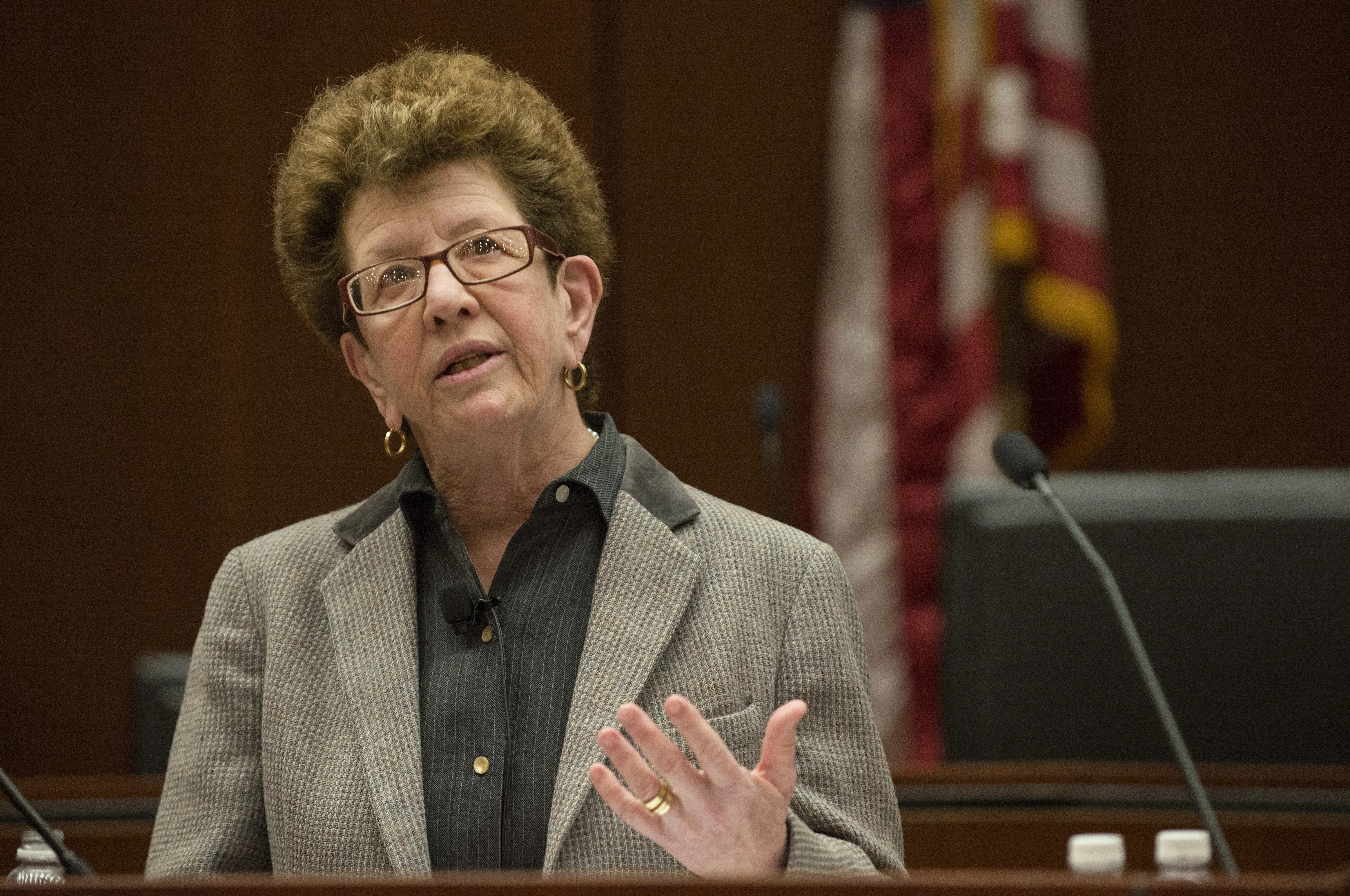Transforming Today's Supreme Court

The unprecedented level of media coverage and public scrutiny that surrounded Supreme Court nominations during the presidencies of Lyndon B. Johnson and Richard M. Nixon shaped the confirmation process and narrowed the types of candidates presidents consider, said Professor Laura Kalman when she delivered this year’s Maurice and Muriel Fulton Lecture in Legal History. The Lecture—which invites a prominent legal historian to speak at the Law School each year—examined the long-range impact of Johnson’s and Nixon’s efforts to guide the Court in their favor.
Kalman, who is a Professor of History at the University of California, Santa Barbara, said the tumultuous period began when Johnson convinced Justice Arthur Goldberg to become US Ambassador to the United Nations and nominated his loyal advisor, Abe Fortas, to take his place.
“The story starts in 1965, when LBJ decided he needed a spy to apprise him of Warren Court activities,” Kalman said. “He wanted Fortas at the Court to keep an eye on the score, and to advise him on affairs of state.” During this period, she added, justices were often, before coming to the Supreme Court, governors, members of Congress, practicing lawyers (like Fortas), and Presidential intimates—the nomination was widely applauded.
Things had changed by 1968. When Chief Justice Earl Warren announced his intention to retire that year, Johnson nominated Fortas for the position, and another liberal friend, Homer Thornberry, to take Fortas’s place as an associate justice. Opponents of the liberal Warren Court attacked these nominations by assailing the Court’s ‘liberal judicial activism,’ especially on crime.
“They argued that ‘lame duck’ LBJ should save the appointment for the next President, that Fortas was his ‘crony,’ and that he had not respected ‘separation of powers’ when he advised President Johnson,” Kalman said.
None of it worked at first, and Fortas seemed on track to become the next Chief Justice. But “Fortas’s opponents finally got the game changer they needed when the Citizens for Decent Literature belatedly zeroed in on Fortas’ and the Warren Court’s obscenity decisions, and urged senators to watch the constitutionally protected ‘dirty movies,’” Kalman said. “Then there was the late-breaking revelation of Fortas’s honorarium for teaching a course, which was not just huge, but was raised by Fortas’s former partner from former clients.”
Fortas wasn’t confirmed as Chief Justice, and after Nixon became President, the Administration forced his resignation because of alleged ethics violations. He became the only justice ever to leave the Court in disgrace. When the time came for Nixon to fill the Court’s vacancies, he sought nominees who would align with his interests without appearing close to him. Although two of his later appointees, Lewis Powell and William Rehnquist, were practicing lawyers, the President created a presumption in favor of nominating judges with whom the President had no real prior relationship.
“Nixon told reporters that the Fortas hubbub had shown that he must avoid a political intimate—in Washington vernacular, a ‘crony,’” Kalman said. “He also promised to replace Fortas and Warren with judges with appellate and district court experience.”
Nixon managed to get four of the six individuals he nominated as justices confirmed, though not without comparable antagonism from liberal interest groups and reporters in the process. These battles, like the Fortas fight before them, created the template for the contemporary appointments process, which Kalman argued was rooted in the sixties, not in Reagan’s failed 1987 attempt to nominate Robert Bork.
“We see despair over the ‘kabuki confirmations’ in which nominees don’t answer senators’ questions,” Kalman said. “We see media scrutiny—hearings as spectacle, as during the Fortas fight. We see the interest group mobilization that was crucial to defeating Fortas and two of Nixon’s nominees.”
Kalman argued that many of today’s constraints on the nomination process—avoiding cronyism, and emphasizing prior judicial experience along with an elite law school education—stem from this period. Narrowing the pool from which justices can be drawn has transformed the Court as an institution, and not necessarily for the better, she added.
“Cronies are not always mediocrities or ethically challenged,” Kalman said. “Louis Brandeis and Robert Jackson were both presidential cronies, and cronies have populated the court since Washington appointed Jay.”
When Kalman opened the floor for questions, Geoffrey R. Stone, the Edward H. Levi Distinguished Service Professor of Law, asked whether narrowing the pool to nominees with prior judicial experience should have been a constraint from the very beginning.
“Basically, people who haven’t been judges haven’t had the experience and haven’t demonstrated the capacity to do this well,” he said. “So it seems to me, the move of appointing Court of Appeals judges or state Supreme Court justices, makes eminent sense. So why didn’t they do this in the past?”
Kalman agreed that it makes sense to nominate some appellate judges, but added that solely appointing justices with this background might stifle diversity of opinion and approach on the Court.
“I understand what you’re saying, and it makes sense to me, but do you have to have only federal appellate judges?” she asked. “Wouldn’t a senator on the court be good for helping the court get over its antipathy towards legislative history and understanding more about how Congress operates? Do we only have to have justices from this narrow bandwidth?”
